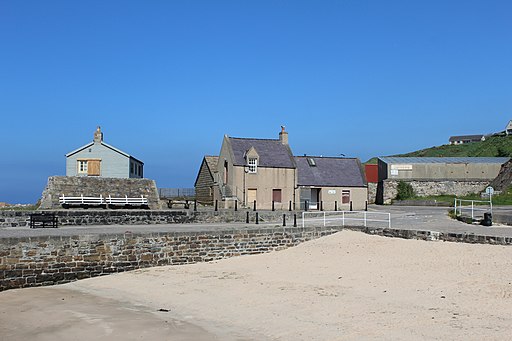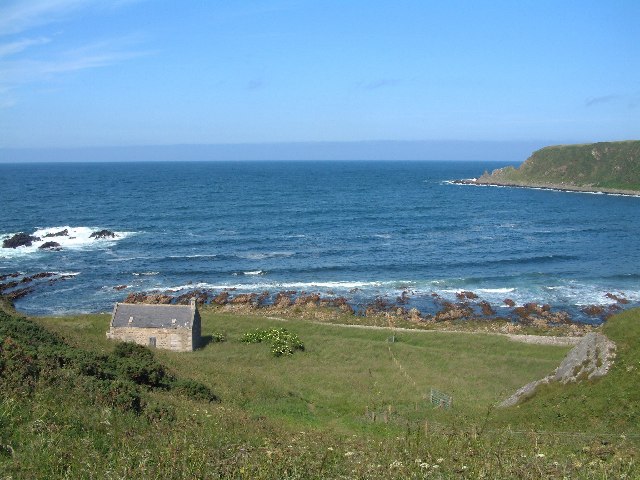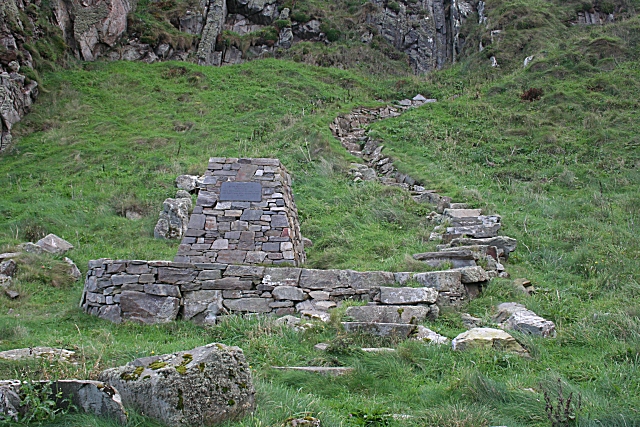Cullen to Findlater Castle Walk

 This walk follows the coastal path from Cullen to the historic Findlater Castle. It's about a 2.5 mile walk from the village to the castle, passing along a cliff top path.
This walk follows the coastal path from Cullen to the historic Findlater Castle. It's about a 2.5 mile walk from the village to the castle, passing along a cliff top path.
Start the walk on the eastern side of Cullen Harbour and then head east to Muckle Hythe and Logie Head. You continue past the Tony Hetherington's Memorial steps and the scenic beach at Sunnyside before arriving at the castle.
The castle sits in a wonderful position on a 50-foot (15 m)-high cliff overlooking the Moray Firth. It dates back to 13th century with the present remains largely from the 14th century.
To continue your walking in the area you could head west from Cullen on the Cullen to Portknockie Walk which follows a section of the epic Moray Coast Trail. There's lovely beaches and more interesting geology to enjoy on this section of the path.
Cullen to Findlater Castle Walk Ordnance Survey Map  - view and print off detailed OS map
- view and print off detailed OS map
Cullen to Findlater Castle Walk Open Street Map  - view and print off detailed map
- view and print off detailed map
Cullen to Findlater Castle Walk OS Map  - Mobile GPS OS Map with Location tracking
- Mobile GPS OS Map with Location tracking
Cullen to Findlater Castle Walk Open Street Map  - Mobile GPS Map with Location tracking
- Mobile GPS Map with Location tracking
Further Information and Other Local Ideas
To extend the walk you can continue east to visit Portsoy on the Portsoy To Cullen Coastal Walk. This fine cliff top path additionally visits the lovely secluded beach at the nearby Sandend Bay. In Portsoy you can also try the Portsoy Railway Walk. This short walk takes you along the old railway line to the Loch of Soy where there's some pleasant waterside footpaths.







